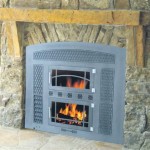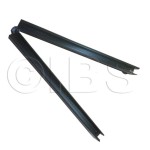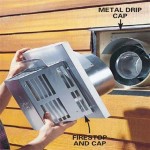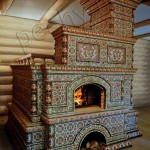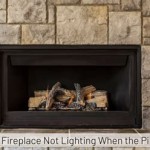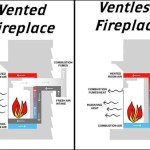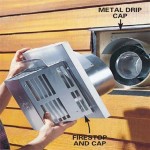Gas Fireplace Inserts: A Consumer Guide
Gas fireplace inserts represent a practical and aesthetically pleasing heating solution for homeowners seeking to upgrade existing inefficient wood-burning fireplaces. These inserts offer the visual appeal of a traditional fireplace with the convenience and efficiency of gas heating. This guide aims to provide consumers with essential information to make informed decisions when considering a gas fireplace insert purchase.
Unlike traditional wood-burning fireplaces, which often lose a significant amount of heat up the chimney, gas fireplace inserts are designed to radiate heat directly into the room. They also offer greater control over heat output and can be easily turned on and off, eliminating the need to chop, stack, and manage firewood. Installation typically involves inserting the gas unit into the existing fireplace opening and connecting it to a gas line and a venting system. The process usually requires professional installation to ensure safety and compliance with local building codes.
Several factors contribute to the growing popularity of gas fireplace inserts. These include increased heating efficiency, reduced emissions compared to wood-burning fireplaces, ease of use, and a wide range of aesthetic options. Modern gas fireplace inserts can mimic the look of a traditional wood fire with realistic-looking logs and flame patterns, while offering the convenience of a remote control to adjust the flame height and heat output.
Types of Gas Fireplace Inserts: Venting Options
One of the crucial considerations when selecting a gas fireplace insert is the venting system. There are typically two main types: direct vent and vent-free. Each type has its own set of advantages and disadvantages that impact installation requirements and overall performance.
Direct vent gas fireplace inserts draw air for combustion from outside the home and vent exhaust gases directly outside as well. This is achieved through a sealed system, typically using a coaxial vent that runs through the existing chimney or through an exterior wall. The primary advantage of direct vent systems is that they do not deplete indoor air or introduce combustion byproducts into the living space, making them a safer and more efficient option.
Vent-free gas fireplace inserts, as the name suggests, do not require venting to the outside. They burn very cleanly and are equipped with oxygen depletion sensors that automatically shut off the unit if oxygen levels in the room fall below a safe threshold. While vent-free models offer the advantage of easier installation, they are subject to stricter regulations and may not be permitted in all jurisdictions. Additionally, they can contribute to indoor moisture and may not be suitable for individuals with respiratory sensitivities.
Choosing between direct vent and vent-free options depends on individual preferences, local regulations, and the specific characteristics of the existing fireplace setup. Direct vent systems are generally recommended for their safety and efficiency, while vent-free models offer greater installation flexibility in certain situations. It is important to consult with a qualified HVAC professional to determine the best venting option for a particular home.
Efficiency and Heating Capacity
The efficiency of a gas fireplace insert is a critical factor in determining its overall heating performance and cost-effectiveness. Efficiency ratings are typically expressed as a percentage, indicating the proportion of fuel energy that is converted into usable heat. Higher efficiency ratings translate to lower fuel consumption and reduced heating costs over the long term. The heating capacity, measured in British Thermal Units (BTUs), indicates the amount of heat the insert can generate per hour.
Gas fireplace inserts intended for use as a primary heat source should have higher BTU ratings and efficiency percentages. It is important to select an insert with sufficient heating capacity to adequately warm the intended space. Over sizing can lead to inefficiency and discomfort, while under sizing may result in inadequate heating.
Several factors influence the efficiency and heating capacity of a gas fireplace insert, including the type of burner, the design of the heat exchanger, and the insulation of the firebox. Advanced burner designs and heat exchangers maximize heat transfer, while effective insulation minimizes heat loss. Consumers should carefully review the specifications and efficiency ratings of different models before making a purchase.
Energy efficiency is not just about saving money; it also contributes to environmental sustainability. Choosing an energy-efficient gas fireplace insert helps reduce greenhouse gas emissions and conserves natural resources. Many models are Energy Star certified, indicating that they meet strict energy efficiency guidelines set by the U.S. Environmental Protection Agency.
Features and Aesthetics
Beyond functionality and efficiency, gas fireplace inserts offer a wide range of features and aesthetic options to complement various home décor styles. Modern inserts often incorporate advanced control systems, remote controls, adjustable flame heights, and programmable thermostats. These features enhance convenience and allow for precise control over heat output and temperature.
The visual appeal of a gas fireplace insert is a significant consideration for many homeowners. Manufacturers offer a variety of log sets, flame patterns, and firebox liners to create a realistic and inviting fireplace ambiance. Log sets can be crafted from ceramic fiber or refractory cement and are designed to mimic the appearance of natural wood. Flame patterns can be adjusted to create different visual effects, such as a roaring fire or a gentle flickering flame.
Firebox liners come in various materials and finishes, including brick, stone, and porcelain. These liners enhance the aesthetic appeal of the fireplace and help to radiate heat into the room. Some models also offer decorative fronts and surrounds that can be customized to match existing décor. Consumers can choose from a wide range of styles, from traditional to contemporary, to create a fireplace that complements their personal taste.
In addition to aesthetic considerations, safety features are also important. Look for models with features such as safety shut-off valves, oxygen depletion sensors, and child safety locks. These features help to prevent accidents and ensure safe operation. Regular maintenance, including cleaning and inspection, is essential to keep the gas fireplace insert functioning properly and safely.
Selecting a gas fireplace insert involves careful evaluation of venting options, energy efficiency, heating capacity, features, and aesthetics. Consulting with a qualified HVAC professional can provide valuable guidance and ensure that the chosen insert is properly installed and safely operated. By considering these factors, consumers can make informed decisions and enjoy the warmth and ambiance of a gas fireplace insert for years to come.

Best Fireplace Inserts Consumer Reports

Gas Fireplaces Recalled Over Explosion Hazard

10 Best Gas Fireplaces Consumer Reports 2024 Guide Fireplace Insert Propane Ventless

Best Ventless Gas Logs Consumer Reports

A Step By Guide To Understanding Fireplace Inserts

Gas Fireplace Insert Cost Forbes Home

The Best Gas Fireplaces Of 2024 Direct Learning Center

Top 5 Best Gas Fireplace Inserts 2024
.aspx?strip=all)
Top 11 Gas Fireplace Insert Trends Of 2024

Best Fireplace Inserts Of December 2024 Forbes Home
Related Posts

